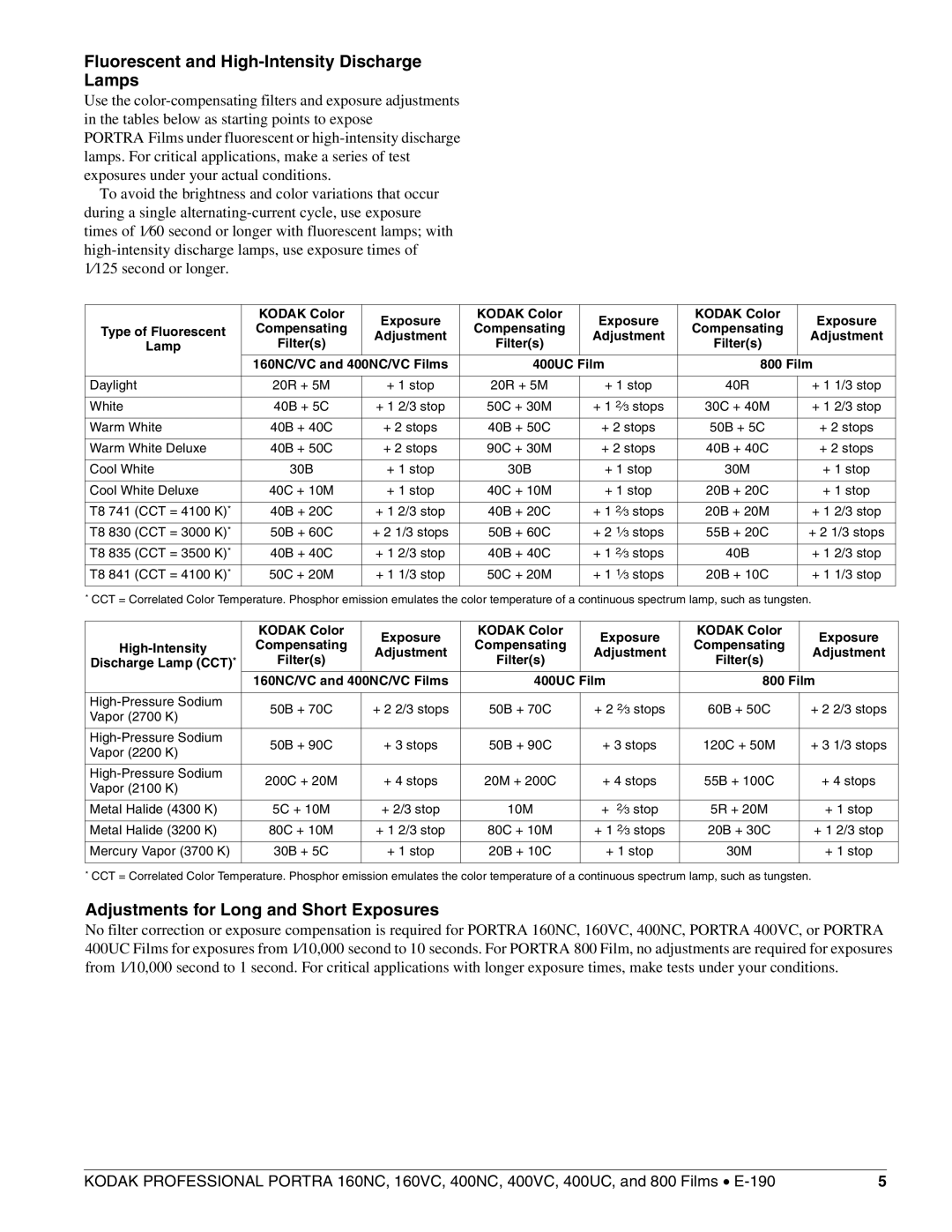160NC, 160VC, 400UC, 400VC, 800 specifications
Kodak film has long been synonymous with quality, performance, and innovation, and its color negative films Kodak 400NC, 800, 400VC, 400UC, and 160VC exemplify these traits. Each of these films offers unique characteristics, catering to various photographic needs and artistic preferences.Kodak 400NC, known as "Natural Color," is designed for shooting in available light conditions. Its balanced color rendition and fine grain structure make it ideal for portrait and landscape photography. The film's ISO 400 sensitivity ensures versatility, allowing photographers to capture images in a range of lighting situations, from bright daylight to dim indoor settings. The advanced emulsion technology used in 400NC helps achieve realistic skin tones and vibrant yet true-to-life colors, making it a popular choice among enthusiasts and professionals alike.
Kodak 800 film takes sensitivity a step further with its ISO 800 rating. This film is perfect for low-light environments where capturing quick moments is essential. Its extended sensitivity allows for faster shutter speeds while maintaining overall image quality. Kodak 800 provides rich colors and smooth transitions in shadows and highlights, making it suitable for events like concerts or evening gatherings. However, it is essential to note that while 800 film excels in low light, it can exhibit a slightly more pronounced grain compared to its 400 counterparts.
The Kodak 400VC, or "Vivid Color," variant is engineered to deliver dynamic color saturation and increased contrast. It’s particularly favored by photographers looking to add a punchy aesthetic to their work. The film maintains a similar ISO 400 sensitivity as the NC version but stands out for its ability to produce more vibrant hues. This makes it ideal for subjects like landscapes and street photography, where enhanced color can significantly impact the final image.
Kodak 400UC, or "Ultra Color," is another ISO 400 option that focuses on impressive color depth and detail. It achieves this through advanced grain technology and improved sensitivity. Photographers often choose 400UC for its tonal range and ability to retain detail in both highlights and shadows, making it a reliable choice for a variety of scenes, from portraits to still life compositions.
Finally, Kodak 160VC offers a unique proposition with its ISO 160 rating, ideal for those who prioritize finer grain and detail over higher speed. This film shines in controlled lighting and outdoor environments, producing stunning, true-to-life colors with exceptional clarity. It is particularly favored in portrait photography and fashion shoots where the artist wants to capture vivid colors with a soft yet sharp finish.
In conclusion, each Kodak film variant has distinct features catering to different photographic styles and needs. From the versatility of 400NC to the vividness of 400VC and the detail of 160VC, Kodak continues to be a leader in film photography, offering options that enhance creativity and capture moments vividly.
